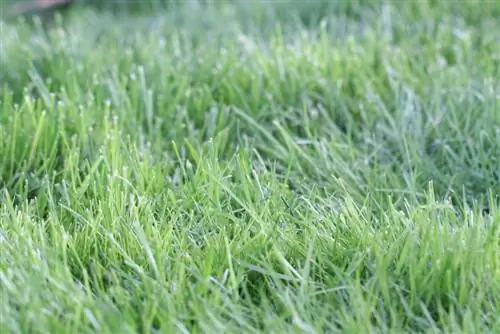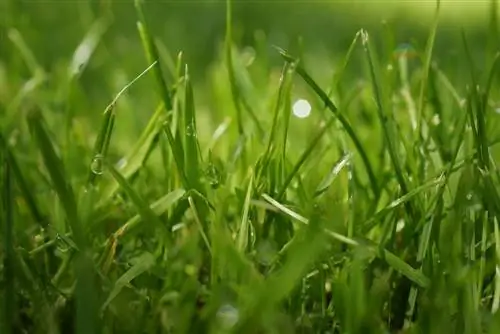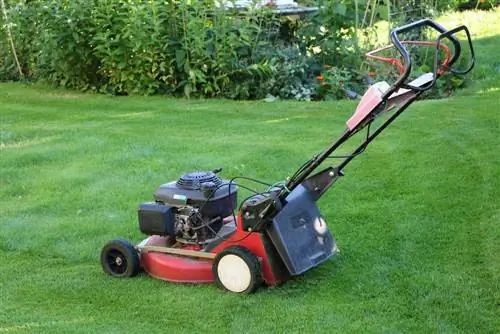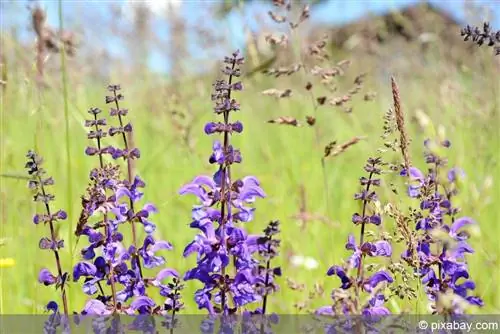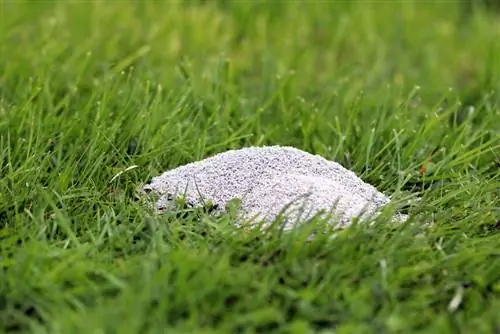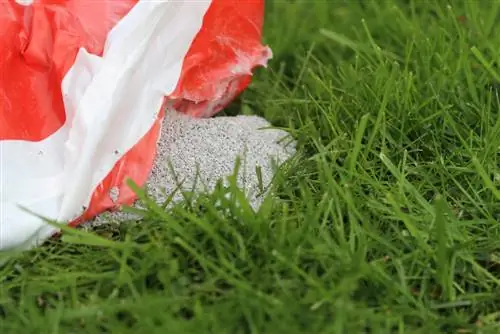- Author admin [email protected].
- Public 2023-12-17 03:39.
- Last modified 2025-01-24 12:45.
Winter turns what was once a lush green lawn into a sad, brownish and bare sight in many places. The sensitive grasses suffer from winter cold, possible snow loads or simply excessive moisture. Moss and thatch are often the result of the bare season, so care measures in spring such as fertilizing and scarifying are essential. But when is the right time for this?
Time and optimal sequence
So that care measures such as fertilizing and scarifying can be fully effective and the lawn then appears lush green as desired, the most important thing is the optimal time for each measure and the correct sequence.
Kalken
The first important measure for balanced fertilization is liming the lawn. Lime the lawn by the beginning of March at the latest and bring its pH value into the correct range. If the soil is too acidic, the grass grows poorly, cannot absorb enough nutrients (and therefore turns yellow), and mosses and weeds such as wood sorrel quickly take over. To do this, use simple lawn lime, which simply consists of ground sedimentary rock. Apply this evenly to the lawn, dosing the amount depending on the acidity of the soil. For a strongly acidic surface, plan on using around half a kilogram of lime per square meter of surface. If, on the other hand, you just want to maintain the pH value, 200 grams are sufficient for the same area. A heavy rain should then wash the lime into the earth.
Tip:
Moss and weeds are a clear sign that the soil is too acidic, which is why the best way to combat this unwanted growth is by liming.
Mowing
Now let the lawn rest until April, because on the one hand lime needs a lot of time to develop its effect and on the other hand the maintenance work that follows only makes sense when temperatures are at least ten degrees Celsius. The first lawn cut should be in April at the earliest, when the ground is warm enough for new growth to begin. The grass then grows stronger and develops stronger roots - which is also the main reason for spring pruning. After all, he althy grass only grows on he althy and strong roots, which ensure an adequate supply of water and nutrients to the above-ground parts of the plant.
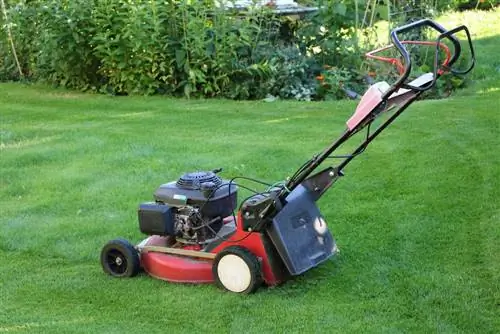
So that mowing has the desired results, please pay attention to these tips:
- only mow when the ground temperature is at least ten degrees Celsius
- Do not set the lawn mower deeper than four centimeters
- do not mow when it is raining, let the lawn dry first
- water after mowing in dry conditions
- Do not mulch or remove grass clippings with a rake
Fertilize
Immediately after the first mowing, fertilize the lawn so that the grass receives the nutrients it needs for its new growth. Use a fast-acting, long-term mineral fertilizer with a high nitrogen content. This releases its nutrients continuously over a period of three to four months and thus ensures an even supply of the grass. Make sure to only fertilize in damp weather or shortly before rain is forecast - on dry ground, the highly concentrated nutrients do not reach the roots and burn the sensitive grasses. If there is no rain in sight, we recommend artificially watering the lawn afterwards.
Tip:
Have some soil samples tested in a specialized laboratory every year before the first fertilization. Together with the analysis of the soil composition, you will receive recommendations for optimal fertilization. Soil analysis helps to avoid over- or under-fertilization.
Verticutting
It makes sense to scarify the lawn about ten to 14 days after the first fertilization. The lawn needs this time to strengthen itself and sprout new growth after the winter. Scarifying or aerating the soil puts a lot of strain on the grass; ultimately the turf is punctured and numerous roots are cut off. However, this measure is not necessary in every case, because you only have to take the scarifier out of the shed or rent it from the garden center in these cases:
- Lawn heavily covered in moss
- Grasses grow only weakly
- Soil is impermeable, puddles form after rainstorms
If, on the other hand, the lawn shows he althy growth in spring and there is little or no moss to be seen, you can save yourself having to aerate the lawn.
The best time for this measure is after the second lawn cut at the end of April / beginning of May, as the lawn can then grow back vigorously. If the lawn still looks unhe althy despite all your efforts, you should apply fertilizer again after scarifying.
Reseeding
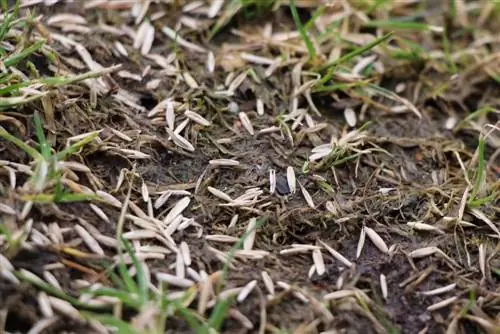
Only at the very end, when all the spring care work has been completed, do you reseed any bare spots in the lawn. Use the same seed mixture as for the rest of the lawn - or distribute the seeds not only on the areas with little vegetation, but also in the lawn around them. Otherwise, the reseeded spot could be clearly visible later because the grass species were mixed differently and therefore have a different shade of green. With a wider distribution of seeds, you blur the boundaries and make the stain less noticeable.

